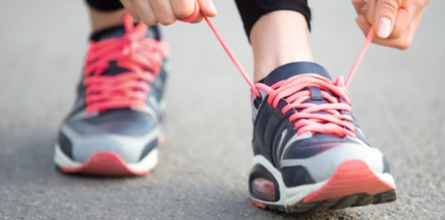The Sports Injury Fix top 5 tips to running injury free
By Mike James | 8th November 2018 | Advice
Sports Injury Fix’s resident running expert Mike James has spent over 20 years treating novice to elite runners worldwide from 1500m to 100-mile races. He is also a competitive runner who has completed over 100 marathons and ultra-marathons, so when he talks, we tend to listen.
Running is one of the most popular leisure and sporting activities undertaken worldwide, and it has been stated that running has numerous positive effects on health and fitness.1
Regardless of age, ability and goal, running related injuries (RRI) are common, and despite having a generally low level, mid-range dynamic nature, a relatively high incidence of RRI is observed. Depending on injury definition and length of follow up period, the injury incidence among runners varies between 11–85% or 2.5 to 38 injuries per 1000 hours of running.2,3
The evidence supporting causes of RRI is less robust 4, and in fact a disparity exists between the reason’s runners attribute to their injury cause and the current evidence. Saragiotto et al 4 questioned recreational runners and found some of the runner’s beliefs regarding injury cause were not supported by the research literature, but importantly stated that their study may contribute to the development of better educational strategies to prevent RRI. In fact, they found that established factors leading to RRI predominantly include training error, high BMI and previous injury.
Despite an abundance of expert therapists who are extremely capable of diagnosing and rehabilitating RRI (see Sportsinjuryfix.com to locate a running expert therapist near you), I have taken the authors advice and produced the following top 5 tips as an educational strategy to attempt to reduce the risk of developing RRI.

1. Choose the right training regime
Arguably the most important and crucial decision that can make or break a season or race plan. The running world is now saturated with coaches and programmes that are readily available. From the highly popular “one size fits all” named coaching system type regimes to bespoke 1:1 tailored regimes to the popular website/magazine downloadable standard issue regimes, there are a plethora of regimes purporting to get you to your goal. However, if you choose the one that pushes you too hard too soon based on your current levels or the timescales available you may increase injury risk and fail to make the start line.
Likewise, choose the regime that doesn’t push you enough and that goal, PB or podium finish may never materialise. If possible, speak to an established coach with a high success rate and go for the tailored approach. The extra outlay in cost will be more than worth it, especially if it means you don’t lose out on race fees and travelling costs due to injury or end up paying someone like myself even more to get you to the start line! If you do use a “cut and paste” type regime, check that it progresses load appropriately. Gabbett et al 5outline the risk of injury via an excellent (and easy to use) calculation of acute (1 week) versus chronic (last 4 weeks) workload. The same author also states that it isn’t necessarily the amount of work load that you do that determines injury, more so, it’s about how you get to that workload via progression that may be the biggest factor leading to injury.
Prepare for the training regime. Many runners develop injuries by simply failing to prepare for a regime. Plan backwards and add a few weeks as needed prior to commencing these sessions to build a sufficient base level needed to start increasing your running. The body will need to be subjected to load in order to adapt, but it must be done progressively and effectively. Quality trumps quantity every time.
2. Be consistent, but flexible
Consistency is the key to running success. Stick to your plans, commit to the regime. However, life gets in the way sometimes and other commitments, injuries and fatigue can side track you from time to time. Don’t chase the sessions you miss, don’t cram extra miles or speed into follow up sessions. If you are training correctly 80% of the time, then you will almost certainly achieve your goals. It is better to line up at the start line, slightly “undercooked” than “overcooked”. Injuries and the potential for injury will be far greater if you lack the ability to listen to the body and use a sprinkling of common sense. Anyone who achieved anything remarkable did it through consistency. As my old coach told me back in the day “Be the Bamboo” – strong and determined but having the ability to bend a little when needed! – be committed and stick to your plans, but always be prepared to bend a little if needed but get back on the plan as soon as possible!

3. Get strong and stay strong!
Recent years have seen an increase in the evidence supporting Strength and Conditioning (S&C) for endurance sports. Research suggests that S&C can reduce overuse injuries by up to 50% and improve performance.6,7
I would argue that EVERY runner would benefit from including a little strength work into their regime to assist their bodies to adapt to and manage training loads. A general approach, largely able to be performed at home should suffice, however for runners who are already experienced in S&C, or are looking to further develop strength and power, then an element of dynamic, plyometric work may be beneficial. If in doubt, seek advice from a professional regarding specific exercises for running. A recent review found that strength training improved running economy by 2-8 % and time trial performance by 2-5%, and dispelled many common misconceptions relating to strength training being detrimental to endurance activity as max O2 uptake, blood lactate and body comp all appeared unaffected.8 Get strong and stay strong as it appears to be the biggest factor we can actively affect in reducing injury risk and improving performance. Performing 2 sessions per week in the off season, coupled with a once weekly maintenance session in season appears an effective strategy for endurance athletes.8
4. Recover and Rehab
In all my years of competing, treating and coaching runners, this is the single biggest factor that is neglected and can ultimately lead to injury. It is the fine balance between stressing the body and allowing it to recover that maximises performance and minimises fatigue and injury risk. Everybody is committed to training like a “pro”, but we need to be equally committed to recovering like a “pro” as well! A structured training regime will factor in recovery weeks and blocks of periodized training to allow recovery. Many methods both scientific and more anecdotal are available to monitor fatigue both in the short and longer term. Seek the advice of an expert on finding out about these.
Eat well, sleep well, hydrate and enjoy down time with friends and family – you will be earning it.
Much debate exists regarding the effectiveness of tools such as foam rollers / trigger point devices, tapes, massage, compression clothing, cryotherapy and heat, and yes there will always be a large placebo effect to consider. But as long as you are training, strengthening and recovering well, then these tools can help get you to continue running.
I regularly see many runners in training for a “check-up”, some soft tissue work and other modalities to help them recover and relax in order to keep training hard. Visit sportsinjuryfix.com to find an expert near you who can help you find what what will work for you. Remember – train hard, recover harder!
Unfortunately, the demands of running inevitably often leads to injury. Thankfully, they are often just niggles and largely not serious in nature. Seek advice and guidance from one of our many experts at sportsinjuryfix.com, explain your plans and work together to address these issues, allowing you the best chance of completing the training and races ahead.

5. Shoes
Try to have several pairs of shoes that you regularly switch between. Changing shoes helps disseminate forces between different structures and allows load to be managed effectively. It is difficult to prescribe specific shoes as runners will respond differently to different footwear. When purchasing new shoes Nigg et al9recommends selecting a shoe based on comfort primarily, I would also recommend selecting a shoe based within your budget. If injured, then certain shoe types may be helpful for specific conditions. A minimalist shoe may be effective for a runner with knee pain, a larger heel drop may be effective for runners with Achilles tendon or calf pain for example.
Generally, I would advise replacing a shoe after 300-600 miles, but monitor how they feel, and when they lose comfort and feel like they aren’t doing what they once were is a simple and easy monitoring strategy.
Most importantly, good luck and remember to find your nearest running injury specialist at sportsinjuryfix.com
References
1.Nielsen R, Buist I, Sørensen H, et al. (2012). Training errors and running related injuries: a systematic review. Int J Sports Phys Ther.7:58-7.
2. Buist I, Bredeweg S, Bessem B, et al. (2010) Incidence and risk factors of running-related injuries during preparation for a 4-mile recreational running event. Br J Sports Med. 44(8), 598-604.
3. van Gent R, Siem D, Van Middelkoop M, et al. (2007) Incidence and determinants of lower extremity running injuries in long distance runners: A systematic review.Br J Sports Med.41(8):469–480.
4. Saragiotto, B, Yamato, T, Lopes, A. (2014) What do recreational runners think about risk factors for running injuries? A descriptive study of their beliefs and opinions. J Orthop Sports Phys Ther44(10):733-8.
5.Hulin, B, Gabbett T, Lawson, D. et al. (2016). The acute: chronic workload ratio predicts injury: high chronic workload may decrease injury risk in elite rugby league players. Br J Sports Med; 50:231-236.
6. Bredeweg S, Zijlstra S, Bessem B, et al. (2012). The effectiveness of a preconditioning programme on preventing running-related injuries in novice runners: a randomised controlled trial. Br J Sports Med.46:865-870
7. Lauersen J, et al. (2014). The effectiveness of exercise interventions to prevent sports injuries: a systematic review and meta-analysis of randomised controlled trials.Br J Sports Med; 48:871–877.
8. Blagrove R, Howatson G, Hayes P. (2018) Effects of strength training on the physiological determinants of middle- and long- distance running performance: A systematic review. Sports Med 48:1117-1149.
9. Nigg B., Baltich J, Hoerzer S, Enders H. (2015) Running shoe and running injuries: myth busting and a proposal for two new paradigms: ‘preferred movement path’ and ‘comfort filter’. Br J Sports Med 49:1290-1294.
